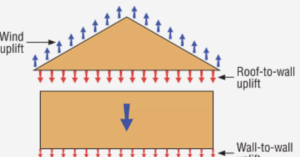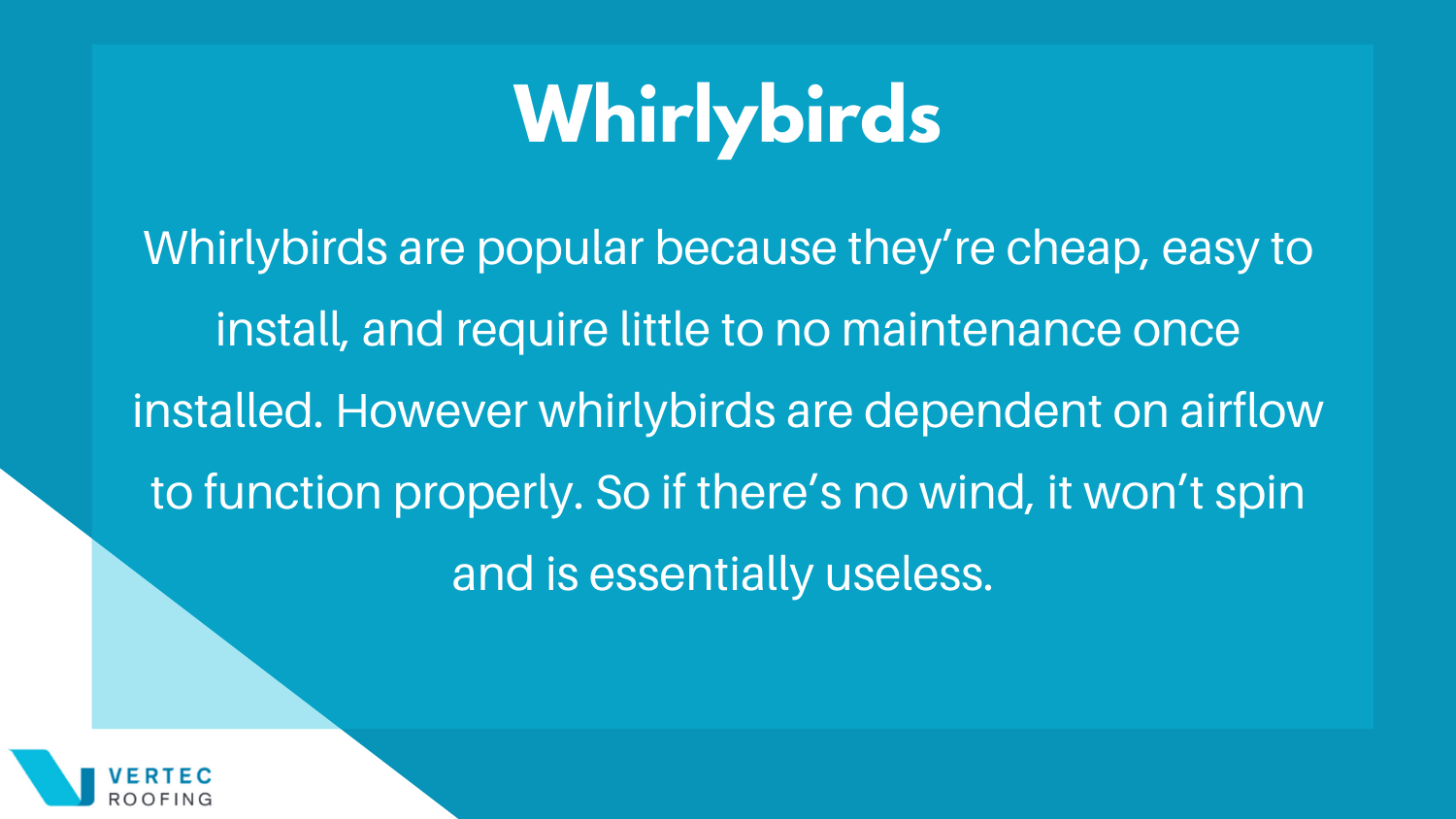

In the hot Australian summers, a steel roof can heat up to well over 60 degrees. Without proper ventilation, amongst other structural components of your home, temperature variations will cause moisture to build up and cause further damage. Proper roof ventilation can help prolong the life of your roof, and the rest of your house.
Whilst an unvented metal roof does not immediately suggest any cause for concern, practicing good ventilation is essential in any home. Vertec’s guide below will outline the ins and outs of roof vents for metal roofs, and why you should always consider ventilation when it comes to roofing.
Venting a roof is one of the most efficient ways to improve its energy performance. By providing an outlet for heat and moisture to escape, venting helps to keep the interior of the home cooler in summer and warmer in winter.
There are two main types of roof vents: those that are installed at the ridge of the roof, and those that are installed at the eave. Ridge vents are more effective at venting heat and moisture, but they can be more difficult to install. Eave vents are less effective at venting heat and moisture, but they are less expensive to install.
By allowing air to flow through the attic and out of the house, you can help keep the space dry and free of mould and mildew. There are a few different ways to vent a roof, so be sure to chat to the Vertec team to find out about your options.
As temperatures rise in the summer, homeowners are looking for ways to keep their homes cooler and more comfortable. One way to do this is by venting their roofs. This can prolong the lifespan of your ceiling insulation and make your home more energy efficient.
When heat builds up in your attic, it can cause your ceiling insulation to break down. This can lead to higher energy bills and a shorter lifespan for your insulation. Venting your roof helps to keep the heat from building up in the first place, and can prolong the life of your insulation by up to 50%.
Roof ventilation is a process of moving air through and out of your attic space. This helps to remove the hot air that can build up in your attic during the summer months. It also helps to prevent moisture from accumulating in your attic, which can lead to mould and mildew growth.
There are two types of roof ventilation systems: passive and active.

To ensure that your roof ventilation system is working properly, it’s important to have it inspected regularly by a professional. They will be able to clean any debris from your vents and make sure that they are clear of any obstructions. They can also check to see if your fans are working properly and replace them if necessary. By taking these steps, you can help to extend the life of your roof and prevent expensive repairs down the road.
If you live in an area that is prone to bushfires, it is important to be aware of the legal standards for roof ventilation. The National Construction Code (NCC) provides guidance on how to mitigate condensation risk in buildings. In general, the NCC recommends that roofs should be ventilated to reduce the risk of condensation.
However, there are some circumstances where this may not be possible, such as in very dry climates. In these cases, other measures, such as insulation, may be required to reduce the risk of condensation. If you are unsure about the best way to ventilate your roof, you should consult a qualified roofer.
There are two essential types of roof vents: intake vents and exhaust vents. Intake vents are installed at the bottom of the roof, near the eave line, to allow air to enter the attic. Exhaust vents are installed at or near the ridge line to allow hot air and moisture to escape from the attic.
Properly installed and maintained intake and exhaust vents help to ensure a long lasting, energy efficient, and comfortable home.
Yes – you do need to vent a metal roof, particularly in Australia where the weather can vary enormously.
Ridge ventilation is one of the most effective ways to vent a roof. It allows hot air to escape through the ridge of the roof, while cooler air is drawn in through the soffits or eave vents. This helps to keep the attic space cool and dry and prevents moisture and condensation from building up. Ridge vents can be used on both shingled and metal roofs and are available in a variety of sizes and styles to fit any home.
Whirlybirds are a type of ventilator that can be used to vent a roof. They work by spinning in the wind, which creates an airflow that helps to remove heat and moisture from the building. Whirlybirds are a great way to keep your roof cool and dry, and they can also help to reduce energy costs by keeping the building cooler in the summer months.

Solar Powered Ventilation is a great way to vent a metal roof. It uses the power of the sun to vent the air inside the house, allowing the temperature inside the house to stay cooler in the summer and warmer in the winter. Solar Powered Ventilation is also a great way to reduce energy costs, as it does not require any electricity to operate. Solar Powered Ventilation is a great investment for any homeowner looking to improve their home’s energy efficiency.
Gable vents are one of the most popular ways to vent a metal roof. They are installed at the gable end of the roof, near the peak. Gable vents come in a variety of styles and sizes to suit any home’s needs.
Gable vents allow hot air to escape from the attic, while also allowing fresh air to enter. This helps to keep the attic cooler in summer and warmer in winter. Gable vents are an effective way to reduce energy costs and improve the comfort of your home.
The amount of ventilation needed will depend on the size of the roof, the climate, and the type of metal used. In general, however, most metal roofs will need at least two vents: one at the peak of the roof (for hot air to escape) and one near the eave (for cold air to enter).
In warm climates, or if the roof is large, additional vents may be needed. The best way to determine the amount of ventilation your roof needs is to consult with a professional roofing contractor like Vertec.
Our team will be able to assess your specific situation and recommend the best course of action. In most cases, however, increasing the amount of ventilation will help to prevent condensation and moisture build-up, and will extend the life of your metal roof.

Roof ventilation installation is a straightforward task, and will help promote natural airflow. Proper attic ventilation is imperative to help your roof maintain a cooler temperature during the warmer months. It’s always a good idea to give your roof some breathing space by installing an effective ventilation system. Whether you choose a whirlybird installation or another system, Vertec will help install it properly. Balancing intake vents for fresh air, as long with an exhaust system above so the rising hot air can escape. Choosing roof vents for metal roofs is only the first step, make sure you hire the best roofers Sydney has access to at Vertec.

At Vertec Roofing, we believe roofing is about protecting homes and enhancing comfort.